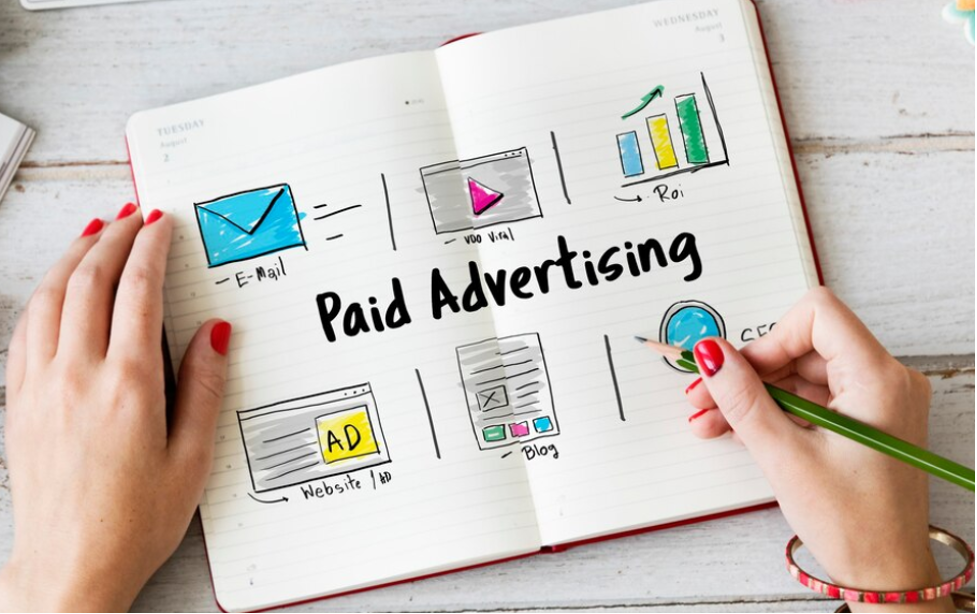Google Ads is a powerful tool for companies looking to attract their target audience and drive conversions. However, simply setting up an ad campaign isn’t enough. To get the most out of your advertising budget, you need to have a well-organized and optimized Google Ads account structure. Proper structuring not only improves campaign performance but also makes it easier to manage and track your results.
Whether you’re managing your own ads or working with a Google Ads agency Dubai, structuring your Google Ads account effectively can be the difference between success and wasted ad spend. In this article, we’ll explore best practices for structuring your Google Ads agency account, providing you with actionable insights to enhance your campaigns.
Why Structuring Your Google Ads Account Matters
The structure of your Google Ads account plays a critical role in the effectiveness of your campaigns. A well-structured account ensures that:
- Your campaigns and ad groups are organized, making it easier to manage multiple ads.
- Ads are relevant to the audience and align with the keywords being targeted.
- You can track performance accurately and optimize based on insights.
- Budget and bidding strategies are aligned with campaign goals.
In short, structuring your Google Ads account properly will lead to more targeted ads, better click-through rates (CTR), and higher return on investment (ROI).
1. Start by Defining Clear Campaign Goals
Before you begin creating your Google Ads account, it’s essential to establish clear objectives for your campaigns. Are you aiming to drive traffic to your website, generate leads, or increase sales? Having well-defined goals will guide every decision you make when structuring your account.
For example, if you’re running multiple campaigns with different objectives, such as brand awareness and direct conversions, you’ll want to separate these campaigns to better track performance and allocate budget accordingly.
Partnering with a Google Ads agency Dubai can help you clearly define these goals and ensure that your campaigns are structured to achieve the desired outcomes.
2. Organize Campaigns by Products, Services, or Audience Segments
One of the best practices in structuring your Google Ads account is to organize your campaigns based on specific products, services, or audience segments. This ensures that each campaign is highly targeted, which improves relevance and performance.
For example, if you own an e-commerce store that sells various products, create separate campaigns for each product category, such as “Men’s Clothing” or “Home Appliances.” This allows you to create ads and landing pages that are tailored to each group, making your marketing efforts more relevant and effective.
Alternatively, if you’re targeting different audiences (e.g., different demographics or geographic regions), structuring your campaigns around these audience segments can help you deliver personalized ads.
Sub-Campaigns for Greater Control
Within each campaign, create sub-campaigns to focus on specific subsets of products or services. For instance, under a “Home Appliances” campaign, you can have sub-campaigns for “Washing Machines” and “Refrigerators.” This level of granularity allows you to tailor ads more specifically, making sure your budget is spent wisely.
3. Structure Your Ad Groups Around Specific Themes or Keywords
Ad groups should be created around tightly themed keywords to maximize ad relevance and quality scores. Each ad group should focus on a specific keyword group or product offering. By doing so, your ads will be more closely aligned with the search terms being used by potential customers.
Let’s take an example, if you’re running a campaign for “Running Shoes,” you can develop ad groups for:
- Men’s Running Shoes
- Women’s Running Shoes
- Trail Running Shoes
- Lightweight Running Shoes
Each ad group should contain ads and landing pages that are specifically relevant to the keywords in that group. This ensures that when someone searches for “men’s running shoes,” they see an ad specifically for that product, leading to higher engagement and conversions.
Avoid Overcrowding Ad Groups
It’s important not to overload ad groups with too many keywords. Keep your keyword list small and focused within each ad group. Typically, having 5-20 closely related keywords per ad group is a good rule of thumb. This practice will enhance the relevance of your ads and improve performance.

4. Utilize Match Types to Control Keyword Targeting
Using different keyword match types (broad, phrase, exact, and negative match) allows you to control how closely your ads align with user search queries. A successful Google Ads agency Dubai knows how to use these match types effectively to balance reach and relevance.
- Broad match: Shows ads for a wide range of search terms related to your keyword. This can help you reach a large audience but may result in less targeted clicks.
- Phrase match: Shows ads for search queries that include your keyword in the exact order. It gives more control than a broad match but still allows for variations.
- Exact match: Shows ads only for the specific keyword or very close variants. This is the most restrictive but ensures maximum relevance.
- Negative keywords: Prevents your ad from showing for certain irrelevant keywords, helping you avoid wasted clicks.
Using a combination of these match types can help you fine-tune your targeting, ensuring that your ads reach the right audience without overspending on irrelevant clicks.
5. Set Up Conversion Tracking and Analytics
No Google Ads account is complete without proper tracking and analytics. Conversion tracking allows you to measure the success of your campaigns by seeing which keywords, ads, and campaigns are driving valuable actions such as purchases, form submissions, or sign-ups.
To optimize your Google Ads agency account, set up conversion tracking early in the process. Google Ads provides built-in tools for tracking various types of conversions, whether they’re on your website, through calls, or in-store visits.
If you’re working with a Google Ads agency Dubai, they can help you integrate advanced tracking tools like Google Analytics, which gives you a deeper understanding of how users interact with your website post-click. This data is crucial for optimizing ad spend and improving campaign performance over time.
6. Budget Allocation and Bidding Strategies
Effective budget management is essential for optimizing the performance of your Google Ads account. Start by allocating budgets at the campaign level based on your priorities. If certain products or services are more profitable or have a higher priority, allocate a larger portion of your budget to those campaigns.
Additionally, adopting the right bidding strategies can make a big difference in your overall ROI. Depending on your objectives, you can choose from different automated bidding strategies, such as:
- Maximize Conversions: Focuses on getting the most conversions within your budget’s range.
- Target CPA (Cost Per Acquisition): Aims to get conversions at a specific cost.
- Target ROAS (Return on Ad Spend): Focuses on maximizing revenue for each dollar spent.
With the help of a Google Ads agency Dubai, you can fine-tune these strategies based on your business goals and available data to ensure your budget is used efficiently.
7. Regularly Review and Optimize Campaigns
A Google Ads account requires constant attention and optimization. Regularly reviewing your account helps you identify underperforming keywords, ads, or campaigns, allowing you to make necessary adjustments. Key areas to monitor include:
- Click-through rate (CTR)
- Conversion rate
- Quality score
- Cost-per-click (CPC)
- Return on ad spend (ROAS)
By conducting frequent audits and leveraging tools like automated rules and A/B testing, you can ensure that your campaigns stay on track and continue delivering results.
Conclusion
Structuring your Google Ads account effectively is key to improving performance, reducing costs, and driving better results. Whether you’re managing campaigns yourself or working with a Google Ads agency Dubai, following best practices like organizing campaigns by products or audience, creating tightly themed ad groups, and using advanced tracking tools will help you maximize your advertising budget.




